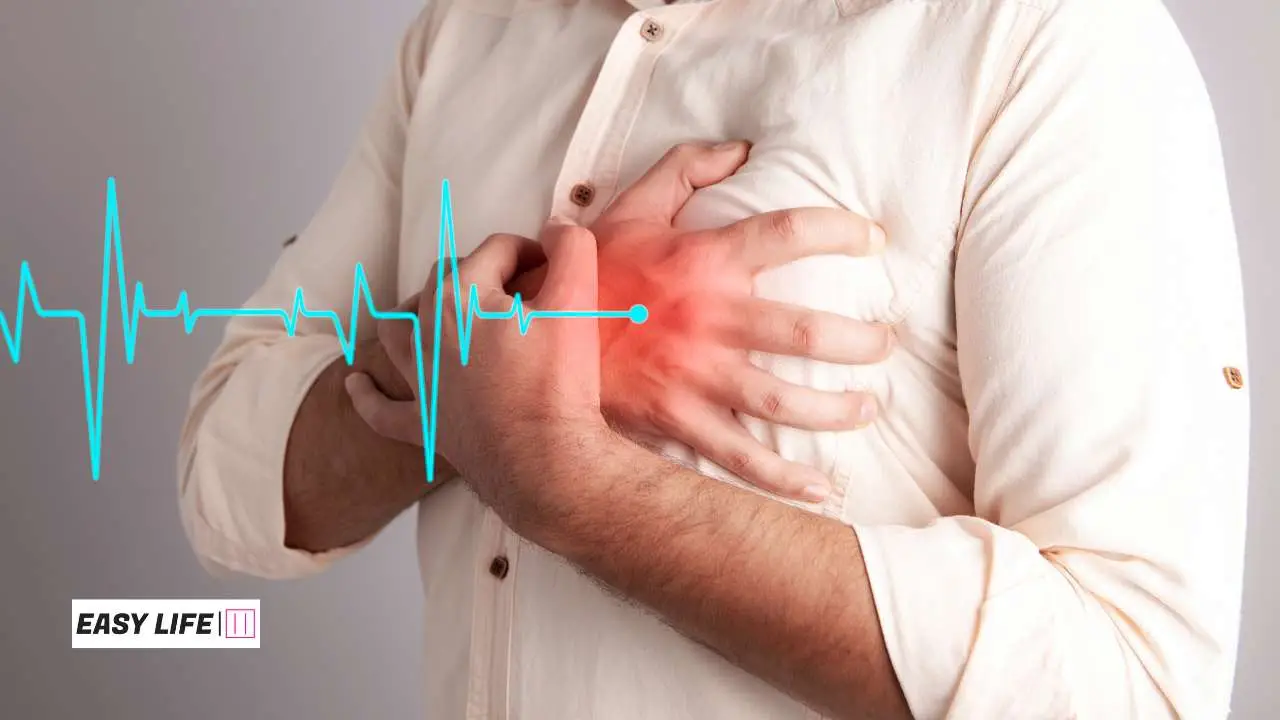Few threats to American health rank higher than heart disease. It claims almost 650,000 lives per year, dwarfing all other causes of mortality. Despite this stark fact, a paradox exists: a considerable percentage of this cardiovascular carnage goes unnoticed, unheard, and, regrettably, unrecognised.
This is the region of asymptomatic heart disease, a silent predator that stalks millions across the country. Unlike the conventional Hollywood depictions of clutching chests and searing pain, this secret enemy works in the background, gradually eroding the very engine of life without raising an alarm.
The motivations for this clandestine march are varied. Symptoms, if they exist at all, might be modest and readily confused for ordinary discomforts such as weariness, mild dyspnea, or even indigestion. Women, in particular, frequently suffer unusual presentations, which adds to the diagnostic cloud.
Cultural considerations also play an important impact. The fast-paced American lifestyle frequently prioritises immediate problems above proactive actions. Regular check-ups, particularly for people who appear healthy, might slip by the wayside. Furthermore, access to healthcare, especially in poor areas, might be a significant obstacle to early detection.
The ramifications of this silent epidemic are significant. Undiagnosed heart disease advances unchecked, increasing the risk of fatal events such as heart attacks and strokes. These, in turn, place a significant burden on individuals, families, and the healthcare system as a whole.
Table of Contents
ToggleMore than half of Americans remain unaware.
A recent Harris Poll, commissioned by the American Heart Association, revealed that only 49% of adults in the United States accurately recognized heart disease as the country’s primary cause of death.
The survey, released in conjunction with the annual statistical report, “2024 Heart Disease and Stroke Statistics: A Report of U.S. and Global Data From the American Heart Association,” highlighted that 16% of respondents were unsure about the leading cause of death, and 18% incorrectly identified cancer as the top mortality factor.
In a press release, Dr. Joseph Wu, the president of the American Heart Association, director of the Stanford Cardiovascular Institute, and professor of medicine and radiology at the Stanford School of Medicine in California, stated, ‘Heart disease, along with stroke, the fifth leading cause of death, claims more lives in the U.S. than all forms of cancer and chronic lower respiratory disease combined, based on the most recent data available. So, the results of this survey, finding that most people do not know the significant impact of heart disease, are discouraging and even a bit frightening.

The report highlights a concerning contrast: while nearly half of all Americans live with some form of cardiovascular disease, including conditions like coronary heart disease, heart failure, stroke, and high blood pressure, there is a notable lack of awareness regarding heart disease mortality.
Despite a 60% decline in death rates from cardiovascular disease since 1950, recent trends show an upward trajectory. High blood pressure is a major contributor to these deaths, with the report noting a 65% increase in the age-adjusted death rate from high blood pressure in the past decade.
Surprisingly, 38% of individuals with high blood pressure are unaware of their condition.
Dr. Joseph Wu emphasized the importance of recognizing the profound impact of cardiovascular diseases on individuals and communities. He stated, “If you don’t have heart disease yourself, chances are you know someone who does, perhaps a family member or other loved one.”
So, how can we put light on this hidden threat? The answer is in a multi-pronged approach:
- Raising awareness: Public education efforts that highlight the incidence and risks of asymptomatic heart disease, particularly among high-risk groups, are critical.
- Promoting Preventive Measures: Encourage regular check-ups, including cholesterol and blood pressure monitoring, to help discover hidden hazards before they become full-blown disease.
- Developing diagnostic tools: Research into more sensitive and accessible screening approaches, particularly for mild appearances, shows great potential.
- Addressing Healthcare Disparities: It is critical to ensure that all people have equitable access to preventative and diagnostic care, regardless of socioeconomic status.
By shedding light on the dark corners of heart disease, we can empower people to take control of their health. Early detection and care can substantially alter the path of this silent killer, saving lives and promoting a healthy nation.
Remember, the fight against America’s deadliest killer is more than just treating symptoms; it’s about casting a light on the darkness, recognising the adversary in its earliest stages. And taking immediate action before it’s too late. Let us leave the dim light and enter a future in which every beating heart has a fighting chance.
Why people may be unaware of the risks linked to heart disease
Individual factors:
- Silent nature of the disease: Unlike certain tumours with visible symptoms, heart disease, particularly in its early stages, frequently advances silently with no overt warning signals. This might mislead people into a false feeling of security, especially those who are otherwise healthy.
- Misattribution of symptoms: Even when modest symptoms such as weariness, shortness of breath, or slight chest tightness arise, they are frequently attributed to everyday issues such as stress, lack of sleep, or even indigestion, delaying the detection of a potentially underlying cardiac problem.
- Lack of awareness of risk factors: Many people, particularly young people, may be unaware of the different risk factors for heart disease, such as high blood pressure, cholesterol, a family history, or bad lifestyle choices. This lack of understanding makes it more difficult to recognise their own susceptibility.
- Fear of getting medical attention: Some people may postpone seeking medical counsel owing to a fear of being diagnosed, the potential costs of healthcare, or just the hassle of organising appointments.
Societal factors:
- Focus on acute illnesses: Healthcare systems and public health campaigns sometimes prioritise tackling immediate and apparent health problems, ignoring chronic disorders such as heart disease, which build gradually.
- Lifestyle pressures: The fast-paced, work-centric culture that pervades many nations can discourage preventative healthcare practices like frequent check-ups and prioritise current duties above long-term health objectives.
- Misinformation and stigma: Misinformation about heart disease and its risk factors can further confuse people, discouraging them from seeking proper information or adopting preventive measures. Stigma around heart disease, particularly its association with advanced age or bad habits, can prevent open discussions and aggressive risk management.
Additionally, specific demographics might face unique challenges:
- Women: Women frequently exhibit different and potentially less common signs of cardiac disease, making diagnosis more difficult. Gender gaps in healthcare access can also cause delays in diagnosis and treatment.
- Minority communities: Certain minority communities are at a higher risk for heart disease due to socioeconomic factors such as poverty, limited access to adequate healthcare, and bad living conditions. A lack of culturally appropriate health education and outreach programmes can exacerbate the situation.
Addressing these individual and social hurdles through public awareness campaigns, increased access to healthcare, targeted education programmes, and early detection studies is critical to narrowing the knowledge gap and empowering encouraging individuals to take charge of their heart health.
Enhanced education and increased access to healthcare are essential.
Enhancing education:
- Public awareness campaigns: Using various media channels to raise awareness about the prevalence, risks, and often subtle symptoms of asymptomatic heart disease can have a substantial impact on public perception. Educational infographics and short videos that emphasise the importance of early detection and risk factors can be especially successful.
- Targeted outreach programmes: By tailoring educational activities to target groups such as women, minority communities, and young individuals, we may meet their unique heart health needs and concerns. This could include culturally appropriate instructional materials, community-based health fairs, and collaboration with reputable local organisations.
- School curriculum integration: Incorporating age-appropriate heart health topics into school curricula, such as risk factors, preventive measures, and the necessity of frequent check-ups, can help children develop long-term knowledge and healthy habits.
Expanding access to care:
- Strengthening primary care: It is critical to ensure that patients have adequate access to primary care physicians who can regularly assess their health, detect potential concerns, and provide preventative treatment. This could include expanding healthcare practitioner availability in underserved communities, reducing appointment wait times, and providing flexible clinic hours.
- Promote preventative screenings: Making cholesterol, blood pressure, and other relevant examinations more affordable and accessible, especially for high-risk groups, can aid in the early detection of heart disease before difficulties emerge. Mobile health units and community-based screening programmes can help reach underserved communities.
- Telehealth integration: Using telehealth platforms to conduct remote consultations with healthcare practitioners can be a beneficial tool for those living in locations with limited healthcare access or who face transportation issues.
By employing these techniques, we can close the knowledge and access gap, allowing people to take control of their heart health and lowering the burden of undiagnosed heart disease. Remember, early detection and action are critical to avoiding the devastation caused by this silent killer. Let us work together to raise awareness about the issue and guarantee that everyone has the opportunity to live a long and healthy life.
How much physical activity is required for maintaining heart health?
The quantity of physical activity required for optimal heart health is determined by a variety of factors, including your present fitness level, age, and general health. However, there are general criteria that provide a decent starting point:
- The American Heart Association (AHA) advises a minimum of 150 minutes of moderate-intensity aerobic activity or 75 minutes of vigorous-intensity aerobic activity each week, spread out over the week. This equates to approximately 30 minutes of moderate-intensity activity most days of the week.
- Moderate-intensity activities: Examples include brisk walking, casual biking, swimming, dancing, and gardening. During these exercises, you should be able to speak in whole words but not sing.
- High-intensity activities: Running, swimming laps, strenuous biking, and high-intensity interval training are a few examples. During these tasks, you should be able to say only a few words at a time.
Additional Benefits:
- Aim for 300 minutes of moderate-intensity activity or 150 minutes of vigorous-intensity activity per week to get even higher advantages for heart health and general fitness.
- Muscle-strengthening activities that work all main muscle groups should be included at least twice a week for overall health and bone health.
Other Factors to Consider:
- If you are currently inactive, begin carefully and gradually increase the duration and intensity of your workouts to avoid damage.
- Listen to your body and schedule rest days as needed.
Consult your doctor before beginning any new exercise programme, especially if you have any underlying health concerns.
Beyond the Minimum:
Remember, even tiny quantities of activity are preferable to none. Taking the stairs instead of the lift, parking further away from your destination and taking short walks throughout the day can all help you be more active and enhance your heart health.
Regular physical activity can considerably lower your risk of heart disease and other chronic disorders, enhance your mood and energy levels, and boost your general well-being.
Strategies for integrating more physical activity into your daily routine.
It might be difficult to incorporate physical activity into your daily routine, but even minor changes can have a significant impact on your heart health and general well-being. Here are some recommendations to help you begin:
Incorporate movement into your daily routine:
- Take the stairs instead of the elevator. Every step counts!
- Choose to park further away from your destination and walk the additional distance. This is a great way to add some incidental activity to your errands.
- Do some chores while you watch TV. Folding laundry, cleaning, or gardening are all great ways to get your body moving while you’re catching up on your favorite shows.
- Take active breaks throughout the day. Get up and stretch, walk around the office, or do some jumping jacks every hour or so. This will help to break up your sitting time and improve your circulation.
Make physical activity enjoyable:
- Find activities you love. There are limitless alternatives, ranging from dancing and swimming to riding and hiking. When you enjoy an activity, you are more inclined to continue with it.
- Try it with friends or family. Having a workout buddy can keep you motivated and make training more enjoyable.
- Listen to music or podcasts while working out. This can serve to divert your attention away from the task at hand and speed up the process.
Begin with small steps and gradually elevate your activity level:
- If you’re not used to being active, begin with a few minutes of exercise per day and gradually increase the duration and intensity as you improve your fitness.
- Do not strive to accomplish too much too fast. This can cause injury and deter you from continuing.
- Celebrate your successes! Every amount of action counts, so be proud of your progress.
Here are some more tips:
- Set reasonable goals. Aiming to remain active for 30 minutes most days of the week is an excellent beginning point.
- Monitor your progress. This might help you stay motivated and track your progress.
- Find an exercise buddy or attend a fitness class. Having someone there to support you can make a tremendous difference.
- Don’t be hesitant to seek for assistance. If you’re not sure how to get started, consult your doctor or a licenced personal trainer.
Remember that even minor modifications can make a significant difference in your overall health and well-being. So get outside and start moving!
Focusing on maintaining good sleep hygiene.
Absolutely! Prioritising excellent sleep hygiene is critical for both physical and emotional well-being, as well as cardiovascular health. Here are some tips for cultivating healthy sleep habits:
Establish a consistent sleep schedule:
Aim to go to bed and wake up around the same time every day, especially on weekends. This helps to regulate your body’s normal sleep-wake cycle.
Create a calm nighttime routine:
Relax for 30-60 minutes before bedtime with activities such as reading, having a warm bath, or listening to relaxing music. Avoid using screens for at least an hour before bedtime, as the blue light they emit can interrupt your sleep cycle.
Optimise your sleeping environment:
Make sure your bedroom is dark, quiet, cool, and clear of clutter. Invest in blackout curtains, earplugs, a comfy mattress and cushions, and keep the room temperature somewhat colder.
Limit your caffeine and alcohol intake:
While these chemicals may make you feel tired at first, they can interfere with your sleep later in the night. Avoid caffeine in the afternoon and evening, and restrict your alcohol intake overall.
Get frequent exercise:
Physical activity might help you sleep better, but avoid hard workouts close to bedtime. Aim for moderate exercise early in the day.
Expose yourself to natural light:
Spending time outdoors during the day can help regulate your circadian cycle. As soon as you wake up, open your curtains and get some sunlight, even if it’s only for a brief walk.
Create healthy sleep associations:
Use your bed solely for sleep and romance. Avoid working, watching television, or using electronic gadgets while in bed. This will cause your mind to link your bed with sleep.
Manage stress:
Chronic stress has a major impact on sleep quality. Before bed, use relaxation techniques such as deep breathing, meditation, or yoga to settle your mind and prepare for sleep.
Listen to your body:
If you’ve been lying awake in bed for more than 20 minutes. And get up and do something soothing until you’re tired. Don’t force sleep because it can cause anxiety and increase insomnia.
Remember that excellent sleep hygiene is a journey, not a destination. Be gentle with yourself and make these changes gradually. If you have recurrent sleep problems, see your doctor to rule out any underlying medical issues.
hat’s absolutely right! Recent research is highlighting the powerful impact of even small bursts of physical activity on your heart health. Here’s why this is exciting news:
The power of small but frequent movement:
- Studies have shown that accumulating just one to five minutes of moderate-intensity activity throughout the day can significantly reduce your risk of heart disease, stroke, and even premature death.
- This means activities like taking the stairs, brisk walking during breaks, or doing some quick stretches can add up and make a real difference.
- It’s a much more achievable approach for people who struggle to fit in longer workout sessions, potentially encouraging more widespread adoption of active lifestyles.
Benefits beyond simply meeting minimum recommendations:
- While official guidelines recommend 150 minutes of moderate-intensity activity per week, every bit of movement counts.
- These short bursts of activity contribute to:
- Improved blood flow and circulation
- Lowering blood pressure and cholesterol levels
- Increased insulin sensitivity
- Reduced inflammation
- Enhanced mood and energy levels
Making it work in your daily life:
- Identify opportunities: Look for ways to incorporate movement into your existing routine. Take the stairs instead of the elevator, park further away, do some jumping jacks during commercial breaks, or dance while cleaning.
- Set reminders: Use a fitness tracker, phone app, or sticky notes to nudge yourself to get up and move every hour.
- Start small and progress gradually: Avoid attempting to change everything all at once. Begin with just a few minutes and gradually increase the duration and intensity as you get fitter.
- Find activities you enjoy: Make movement fun! Choose activities you find enjoyable, like dancing, gardening, or playing with your pets.
Remember, every step counts! By incorporating these small bursts of activity into your day. You can proactively take a step towards a healthier heart and overall well-being. So, get moving and reap the benefits of even the smallest doses of physical activity!









